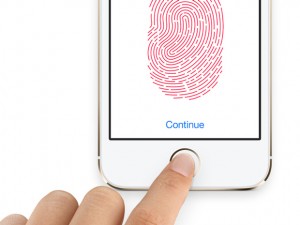Apple Inc.’s (NASDAQ:AAPL) dealings with the United States Patent & Trademark Office, or USPTO, are usually as smooth and predictable as well-oiled clockwork. Two months ago, however, Apple suffered a notable setback when its trademark application for “Touch ID” was rejected out of hand by the USPTO, which published the letter yesterday in accordance with its information release procedures. The Touch ID name was not trademarked due to the probability of confusion with the extremely similar “Kronos Touch ID” trademark, according to the missive.
The letter of rejection, which is available on the USPTO site, was sent on May 7th, 2014. The application was rejected on the basis of the fact that Touch ID is easily confused with Kronos Touch ID, a name trademarked more than a decade ago. Apple Inc. (AAPL) is granted a standard six months in which to act on this letter, meaning until November 7th, 2014. After this date, if no viable reponse has been received, the USPTO will consider the Touch ID trademark application “abandoned.”
 Furthermore, the letter cites “Indefinite Wording” in Apple’s trademark application documents. Apple’s documents refer to “computers,” “cables,” “mobile devices,” and many other totally generic objects, making a trademark applied on this basis unworkable and all-inclusive. The USPTO notes that the trademark application must list specific commercial names for all of these objects in order to be in compliance with trademark filing rules.
Furthermore, the letter cites “Indefinite Wording” in Apple’s trademark application documents. Apple’s documents refer to “computers,” “cables,” “mobile devices,” and many other totally generic objects, making a trademark applied on this basis unworkable and all-inclusive. The USPTO notes that the trademark application must list specific commercial names for all of these objects in order to be in compliance with trademark filing rules.
Attachment 1 reveals that the “Touch ID” trademark actually belongs to Kronos Technology Systems Ltd., now simply Kronos Inc., of Chelmsford, Massachusetts. Kronos is a producer of timekeeping and workforce management technology and systems. The corporation is privately held and was founded in 1977 by Mark S. Ain, making it one year younger than the Cupertino company that just ran afoul of its existing trademark.
Now that the application has been rejected, Apple Inc. has three options open to it. It can abandon the idea of trademarking “Touch ID” entirely but continue to use the name, though in this case it will likely be legally vulnerable to a successful trademark violation lawsuit from the holder of the Kronos Touch ID trademark. Alternately, the company can change the name of Touch ID to something that does not violate the current trademark. Finally, it can purchase the trademark from Kronos Inc., assuming that the holder is willing to sell, or buy out the entire company and all its intellectual property along with it.



